
Restoring Streams and Wetlands Through the Ohio Mitigation Program (OMP)
For the last 10 years, the OMP team has worked to restore and protect streams and wetlands in Ohio.
It’s almost like a sixth sense kicks in when Dana Ohman is out in the field assessing stream health. Sure, there’s plenty of science involved. Boulders are counted. Pool depth is measured. Habitat for fish and bugs is evaluated. The list goes on. But then there’s the art of it all. The space within which decidedly unscientific things like senses and imagination come into play. With each visit to a potential mitigation site, the Ohio Mitigation Program (OMP) team embarks on a journey of understanding. They see beyond the surface, recognizing the cries for help from a habitat in distress.
Quote: Dana Ohman
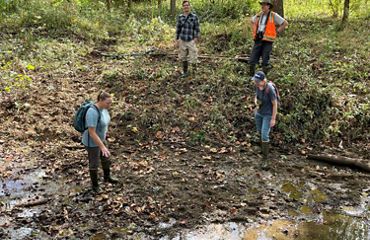
You can actually tell a lot about stream health just by the way the stream feels on the bottom of your feet,” Ohman says. “A stream bottom that’s stable tells you one thing, while squishiness tells you another.
Get More Nature News
Get the best nature stories delivered monthly.
It’s a skill presumably acquired only by those who have long since lost track of the number of times they’ve walked in a creek bed. Ohman falls into that category. A stream and wetland mitigation specialist for The Nature Conservancy in Ohio, Ohman’s job is to help restore waterways and floodplains as part of our mitigation program.
Where most people see only a degraded waterway, OMP staff see potential. “You have to read the land, and imagine it prior to European colonization,” Ohman says. “What the tree cover might have been like, how the stream would have moved through the valley, what plants would have existed along the banks.” From here, armed with a vision and plenty of stream quality data, Ohman’s job is to work with the OMP team to create a restoration plan.
Celebrating 10 Years of Ohio Mitigation Program
Since its initiation in 2014, the Ohio Mitigation Program has worked hard to restore stream and wetland habitat throughout the state.
-
17
Completed restoration projects
-
155
Acres of wetlands restored
-
7.2
Miles of streams restored
-
23+
Active restoration projects
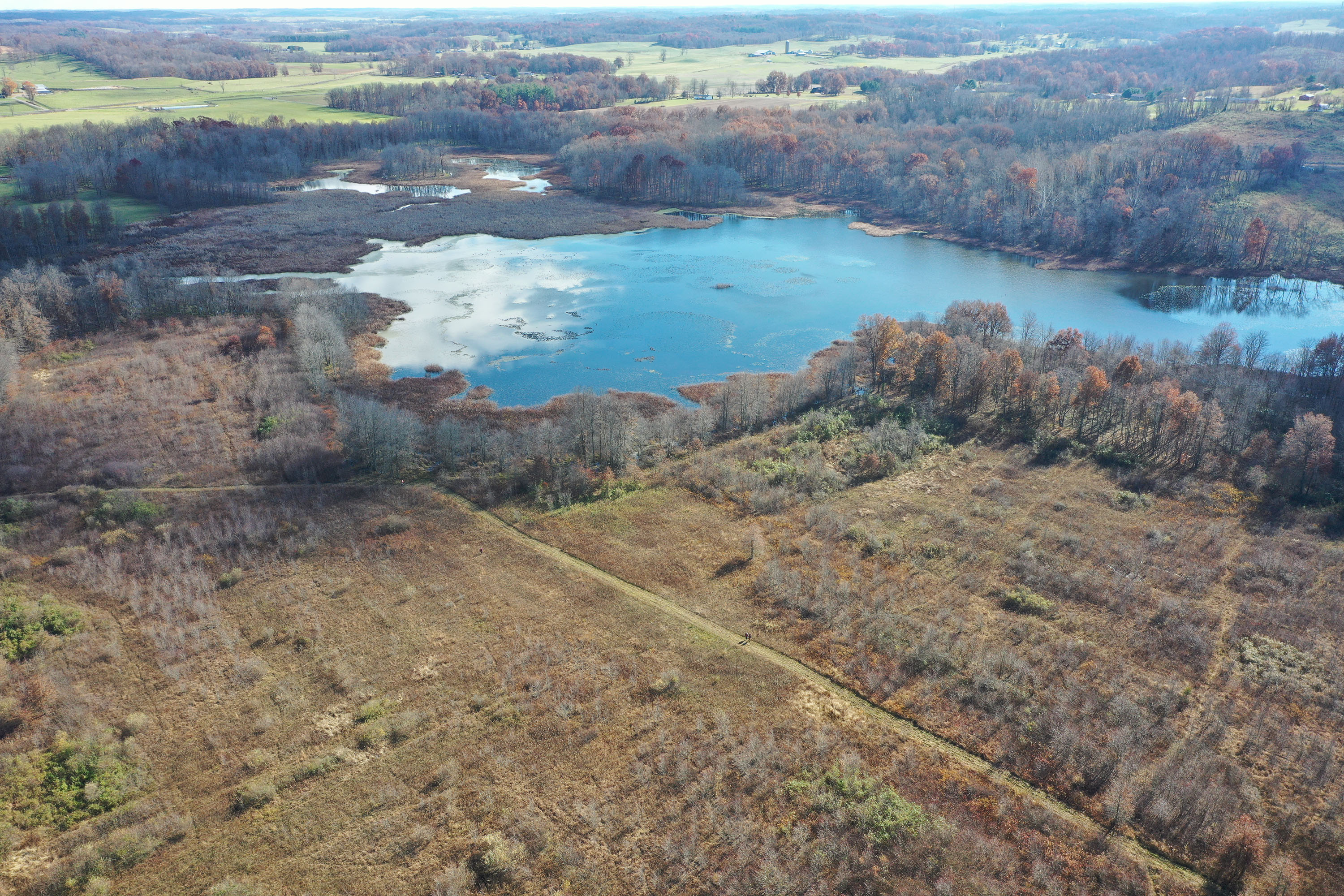
Stream and Wetland Mitigation
In a state that’s lost 90 percent of its original wetlands, good mitigation is critical. TNC’s mitigation program is founded on federal and state laws that require developers to avoid and minimize harm to wetlands and streams. When regulators consider the impacts to be unavoidable, they must be mitigated by protecting or restoring nearby water resources. In the past, many of the projects undertaken by developers on their own were ecologically unsuccessful. Now regulators prefer that developers pay a fee to an approved mitigation provider like TNC to do the required environmental restoration work. The OMP consolidates money from many small, permitted impacts to streams and wetlands and uses these resources to design and implement high quality restoration projects. Through the OMP, TNC and its conservation partners conduct restoration and preservation activities in the same watersheds where wetland and stream disturbances have occurred.
Why We Need Streams and Wetlands in Ohio
Ohio's extensive network of streams and wetlands provide a myriad of benefits to both human and natural systems, serving as vital habitats for a diverse array of plant and animal species and providing flood control and water filtration services. These water bodies act as nurseries for fish and other aquatic organisms, providing breeding grounds and essential shelter for their early life stages. In fact, wetlands are regarded as some of the most biodiverse ecosystems on the planet.
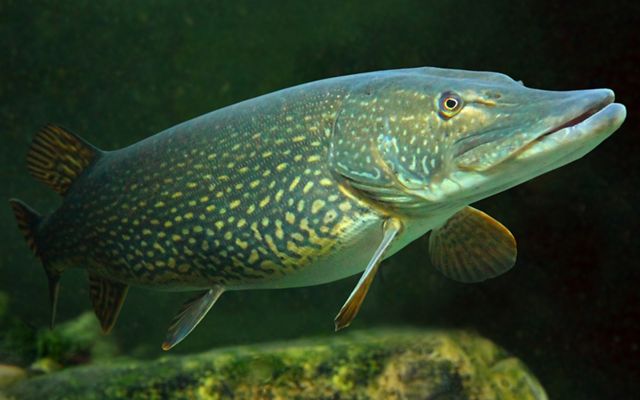
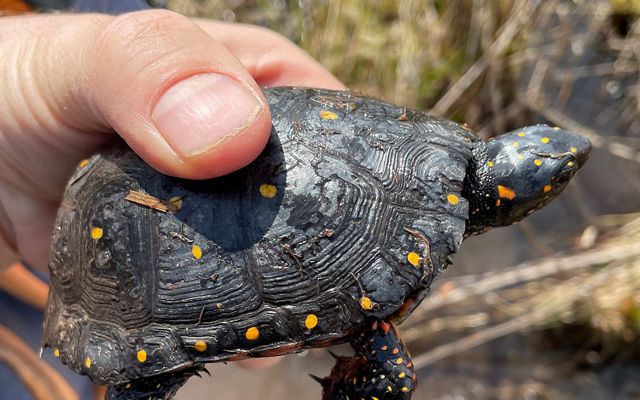
Streams and wetlands also serve as natural filters, purifying water by trapping sediments and pollutants and improving overall water quality. In a state that relies heavily on agriculture and industry, the presence of wetlands helps to mitigate the impact of runoff from fertilizers and pesticides, preventing contamination of larger water bodies, including Lake Erie. These ecosystems also contribute to flood control by absorbing excess water during periods of heavy rainfall, reducing the risk flooding and protecting downstream communities and infrastructure.
Enjoy Learning About Our Recent OMP Projects
Strait Creek
The Ohio Mitigation Program team restored 1.3 miles of stream and 1.7 acres of wetlands at Strait Creek.
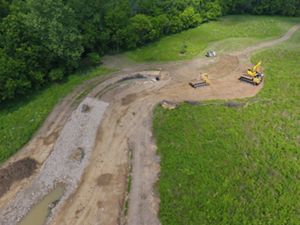
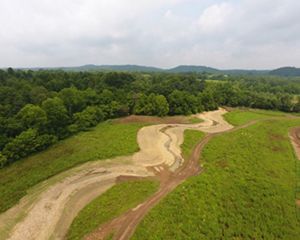
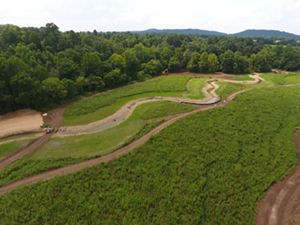
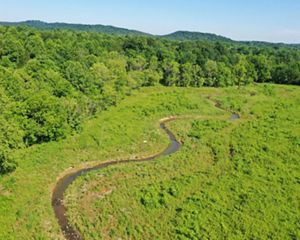

Strait Creek Restoration: Construction crews work to re-meander Strait Creek. © Dana Ohman/TNC
1 of 8

Strait Creek Restoration: The Ohio Mitigation Program worked to restore Strait Creek by re-meandering the stream bed back to its natural state. © Dana Ohman/TNC
2 of 8

Strait Creek: Shortly after restoration work was completed. © Dana Ohman/TNC
3 of 8

Strait Creek Restoration: Post restoration. © Dana Ohman/TNC
4 of 8
In the rugged foothills of the Appalachian Mountains, land suitable for agriculture has always been at a premium. Pushing streams toward the outer edges of a valley afforded settlers more space to grow crops and create infrastructure like roadways as populations expanded. In doing so, many streams like Strait Creek were straightened and channelized, resulting in issues with erosion, flooding and loss of both terrestrial and aquatic wildlife habitat.
Restoring Strait Creek involved dramatically changing the local ecology. In summer 2019, the OMP team worked to remove trash from the streambeds and transform the landscape from one dominated by straightened ditches and abandoned agricultural fields, to streams teeming with life that meander through abundant wetlands and riparian forest.
Today, Strait Creek is a far cry from the channelized and degraded streams that once flowed through the landscape. The team restored 1.3 miles of stream and 1.7 acres of wetlands at Strait Creek. By recontouring the streambed and restoring the stream’s riparian buffer, the project improved water quality, enhanced in-stream headwater habitat for a diversity of plants and animals, and reestablished habitat connectivity with existing natural areas.
Rialto Marsh
The Ohio Mitigation Program team worked to re-contour the stream at Rialto Marsh back to a natural flow state and dug shallow pools that will provide habitat for a diversity of wildlife.
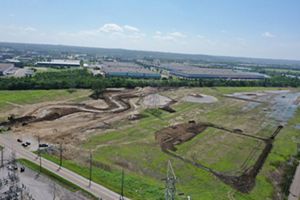
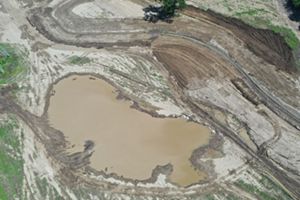
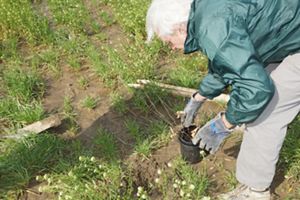
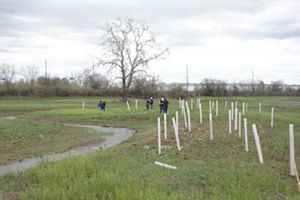

Rialto Marsh Restoration: Newly re-contoured streams wind through what was once degraded farmland. © Dana Ohman/TNC
5 of 8

Rialto Marsh Restoration: Newly created stream beds and wetlands will provide critical wildlife habitat and help with flood control and water filtration at Rialto Marsh. © Dana Ohman/TNC
6 of 8

Volunteers Plant Trees: Restoration of Rialto Marsh has been successful thanks to the many volunteers who have helped to plant trees and monitor the site post restoration. © TNC
7 of 8

Tree Planting at Rialto Marsh: The OMP team and volunteers planted more than 11,700 native trees and shrubs at Rialto Marsh to create a shaded stream corridor and forested wetland habitat. © TNC
8 of 8
Like much of Ohio, the Rialto Marsh property was once covered in wetlands. Being right on the banks of the Mill Creek, the property is part of the creek’s natural floodplain and would likely have been a forested wetland that provided habitat and improved water quality for hundreds of plants and animals.
When the greater Cincinnati area was taken by settlers, large swaths of land were cleared for agriculture, and farmers built up berms around the Mill Creek to prevent it from flooding their fields. The Rialto Marsh property was no exception, and every tree was logged until only one sycamore remained. The wetlands were then drained and separated from the Mill Creek with a berm, a fate seen by many of Ohio’s original wetlands. This has severely impacted the freshwater system upon which plants, animals and people depend.
Working with an engineering consultant, the OMP team began restoring the Rialto Marsh site in 2021. When TNC first saw the area, it was a large field of invasive plants divided by a narrow drainage ditch that emptied into the Mill Creek. Working around powerline easements, utility lines and the railroad tracks, TNC and the engineering consultant removed drainage tiles and invasive species from the property, recontoured the stream back to a natural flow, dug shallow pools that will provide important wetland habitat and planted nearly 12,000 native trees and shrubs, which will shade the stream corridor and provide important forest wetland habitat for wildlife in time.
Restoration Benefits People
In the summer of 2022, TNC opened up the Rialto berm to allow floodwater to flow into the wetland. After a 3-day rainstorm began in Cincinnati, thousands of gallons of water safely flowed into the wetlands instead of into the homes and businesses of community members downstream, proving the projects worth to people and communities.
Turning Back Time
Learn more about the OMP's work to restore Rialto Marsh by visiting our StoryMap.
Visit the Rialto Marsh StoryMapJacoby Branch
Jacoby Branch was once a detriment to the Little Miami River, pouring sediment, pollution and excess nutrients into the watershed. But that’s changing thanks to the restoration work on 60 acres in Yellow Springs, Ohio.
In January 2023, the OMP completed the initial phase of restoration at Jacoby Branch in partnership with the Agraria Center for Regenerative Agriculture, an organization whose mission is to cultivate community resilience by modeling regenerative practices that restore ecosystem health and promote equitable food systems. The project recontoured and reconnected over a mile of degraded stream and created almost four acres of wetland to restore surface water hydrology to the floodplain. Allowing water to access the floodplain more frequently will help to create a cleaner, more diverse ecosystem that will serve as habitat for an abundance of freshwater species including fish, amphibians, and macroinvertebrates.
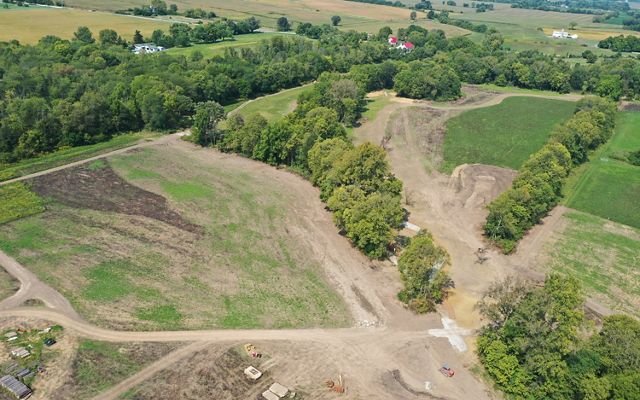

After initial design and restoration work, the OMP team worked to seed the former fields with native seed mixes and plant nearly 30,000 tree and shrub seedlings. In time, the young forest will provide important habitat for wildlife while increasing the ability of the land to hold water by shading the streams and wetlands. The OMP will continue working with partners to help control aggressive non-native species such as bush honeysuckle and Canada thistle. A successful restoration project is a long-term effort, and the OMP will monitor this project for 10 years to support the continued stewardship of the restored stream and newly created wetlands.

A Larger Vision
TNC’s stream and wetland restoration projects are part of The Nature Conservancy's larger goals to halt catastrophic climate change and biodiversity loss. What’s done between now and 2030 will determine whether warming is slowed to 1.5 degrees Celsius—the level scientists agree will avoid the worst impacts of climate change. Worldwide action will also determine whether enough land and water are conserved to slow the rapid acceleration of species loss. Doing both will safeguard people from the disastrous effects of these crises.
With your help we have accomplished many goals toward a clean, healthy, thriving Ohio.
There is still more to do, but we can't do it without you.


